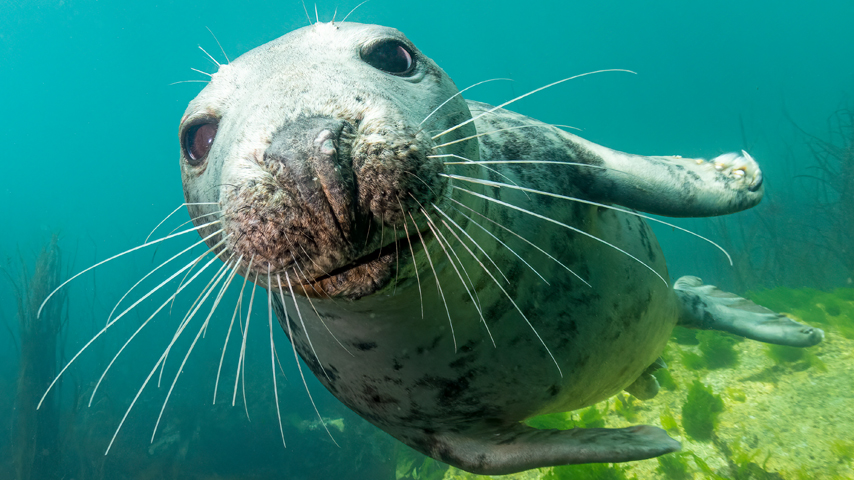Stealth Sensors Get a Whisker Boost
Stealth Sensors Get a Whisker Boost


The key to improved stealth sensing technology could come down to unlocking harbor seal whiskers' capabilities.
Harbor seal whiskers have a unique geometry, making these marine mammals super-sensitive to disturbances in water and allowing them to easily detect and capture their prey. Researchers at the Rochester Institute of Technology (RIT) have been exploring how to harness the whiskers’ capabilities to help improve stealth sensing technology.
“Imagine a tiny movement in water, at a speed of 254 microns per second, which is barely noticeable to us—seals can detect it,” explained Qian Xue, associate professor of mechanical engineering at RIT’s Kate Gleason College of Engineering.
The researchers are developing a prototype system engineered to learn—through math modeling and AI—how vibrations that are triggered by fluid dynamics and movement are captured, interpreted, and identified.
“It’s like when our eyes see pictures and tell the differences between them, or navigate through scenes,” Xue said. “The flow disturbance to seal whiskers is like picture inputs—they’re signal inputs. We are using the vision language intelligence to train an AI model to be able to interpret the signal inputs from flows for classification and tracking.”
Discover the Benefits of ASME Membership
Not much is known about the mechanisms behind harbor seals’ exceptionally sensitive—and precise—whisker sensing, but research groups nationally and internationally are striving to learn more.
Much of that research has focused on the high sensitivity of whiskers in detecting disturbances. Previous studies have shown that blindfolded seals can use their whiskers to track hydrodynamic trails that were left behind in the water several minutes earlier. But Xue and her colleagues “are more interested in the intelligence in signal analysis,” she said.
Her research uses a particular type of computer model to simulate the vibrations both of single and multiple whiskers in a wide range of variables, from calm water to wake-induced conditions from other objects.
“Biological data is hard to collect,” said Xue, whose National Science Foundation award money is estimated to continue through February 2027. “It’s hard to know what is really being done by the animals in the sensing process.”
More for You: Increasing Sensor Precision with the Seebeck Effect
Xue hopes to add flow movement to sensor technology—both for its covert nature and its ability to be more accurate when identifying an object—with a combination of computer simulation, experiments, and AI algorithms.
The RIT team has also received funding from the Naval Research Laboratory to build an autonomous underwater detection and tracking system with biological-level sensitivity, accuracy, and intelligence.
Stealth technology is important in many fields. In military and defense management, it can provide critical information of surrounding areas without revealing the position of the sensor, thereby maintaining operational secrecy. In wildlife and environmental monitoring, it allows animals to be observed in their natural habitats without disturbing their behaviors.
“Some other real-world applications include stealth drones and aircraft, which are designed with stealth technology without being easily detected by radar systems,” Xue added.
Robin L. Flanigan is an independent writer in Rochester, N.Y.




